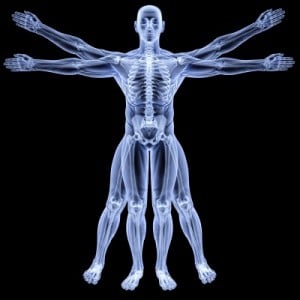
Usually when people ask me this question — how exactly does acupuncture work, in biological terms? — I just give the honest answer. We really don’t know.
Acupuncture points and channels do not seem to follow any of the physical body structures we’re familiar with — the nervous system, the circulatory system, or the lymph system. In fact, points are generally located away from these structures. After all, sticking a needle directly into a nerve or a blood vessel would not have happy results.
Studies have documented a number of changes in body chemistry and brain function with acupuncture treatment (see sidebar), but scientists are generally at a loss to explain the mechanisms involved.
One recent, intriguing theory is that signals from the needles are transmitted through the connective tissue, or fascia, that holds together all of our bones, muscles, and organs. This connective tissue has been described as the “saran wrap” of the body — it wraps around every structure and adheres it to the next, in one continuous sheet.
Researcher Helene Langevin, of the University of Vermont, has noted that most acupuncture points are located between muscle groups, or between muscle and bone — that is, in the connective tissue. Interestingly, the “super points”, which have the strongest effect and the widest variety of therapeutic uses, are often located where several planes of connective tissue intersect.
Langevin was also able to document physiological changes in the connective tissue with acupuncture needling, especially when the needle was rotated by the practitioner. (If you’ve had acupuncture, you’ve probably felt the accompanying “qi sensation” — a feeling of pressure, warmth, numbness, or tingling around the needle.) She surmises that these local changes initiate a wave-like effect that travels through the body; this might explain why a point on the leg, for example, has such a strong effect on the digestive system. You can find her research here.
One thing I love about acupuncture is the mystery of it all. From my own science-based background it makes little sense, but every day I get to see people get better with tradtional Chinese medicine. And, when you get down to it, getting better is what really matters most.
Other Physical Changes With Acupuncture
Although the mechanism for these effects is not clear, researchers have found the following changes in the body during acupuncture treatment:
-
Release of endorphins, neurotransmitters, and hormones
-
Changes to the pituitary gland and hypothalamus
-
Changes in the immune system
-
Changes in brain centers that process the pain response (visible on functional MRI scan)
-
Activation of brain centers targeted by a specific acupuncture point (for example, the visual cortex “lights up” on fMRI when a point indicated for eye problems is needled).
